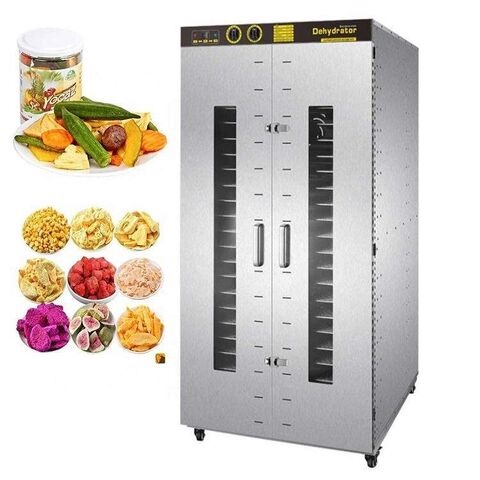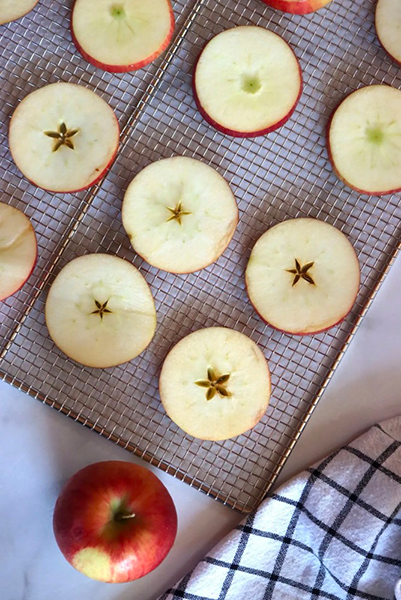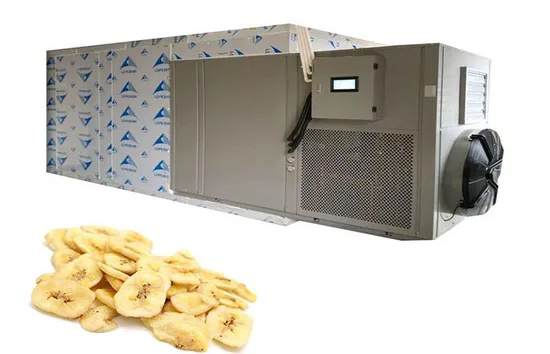
Content Menu
● What is a Fruit and Vegetable Dehydration Machine?
>> Key Components of a Dehydration Machine
● Benefits of Using a Fruit and Vegetable Dehydration Machine
>> 1. Extended Shelf Life
>> 2. Nutrient Retention
>> 3. Cost and Energy Efficiency
>> 4. Space Optimization
>> 5. Versatility Across Products
● Applications of Dehydration Machines
>> 1. Home and Small-Scale Use
>> 2. Commercial and Industrial Use
>> 3. Disaster Preparedness
● Technical Process: How Dehydration Machines Work
>> Step 1: Pre-Treatment
>> Step 2: Loading and Configuration
>> Step 3: Drying Cycle
>> Step 4: Post-Drying Handling
● Comparative Analysis: Dehydration vs. Other Methods
● Market Trends and Innovations
>> 1. Smart Dehydration Systems
>> 2. Sustainability Focus
>> 3. Customization for OEM Partners
● Case Study: Reducing Post-Harvest Losses in Kenya
● Conclusion
● FAQs
>> 1. How does a fruit and vegetable dehydration machine prevent spoilage?
>> 2. Can I dehydrate multiple foods simultaneously?
>> 3. Do dehydrated foods lose flavor?
>> 4. What maintenance do dehydration machines require?
>> 5. Are industrial dehydrators cost-effective for small businesses?
● Citations:
Food preservation is a cornerstone of reducing global food waste, extending shelf life, and maintaining nutritional integrity. Among modern preservation technologies, fruit and vegetable dehydration machines have emerged as a game-changer for households, businesses, and industries. This comprehensive guide explores how these machines optimize food preservation, their technical mechanisms, and their role in sustainable food systems.

What is a Fruit and Vegetable Dehydration Machine?
A fruit and vegetable dehydration machine is a purpose-built appliance or industrial system that removes moisture from produce through controlled heat, airflow, and humidity regulation. By reducing water activity (aw) to levels below 0.6, these machines halt microbial growth, enzymatic reactions, and oxidation—key factors in food spoilage. Unlike traditional sun-drying methods, modern dehydrators ensure precision, hygiene, and scalability.
Key Components of a Dehydration Machine
1. Heating Element: Generates temperatures between 35°C (95°F) and 70°C (158°F) to evaporate moisture without cooking the food.
2. Airflow System: Built-in fans distribute heat uniformly across stacked trays.
3. Humidity Control: Advanced models include humidity sensors to adjust drying cycles dynamically.
4. Trays or Belts: Stainless steel or BPA-free plastic trays hold sliced produce during dehydration.
Benefits of Using a Fruit and Vegetable Dehydration Machine
1. Extended Shelf Life
Dehydration reduces water content by 80–95%, inhibiting bacterial and fungal growth. For example:
- Fresh apples spoil in 2–4 weeks, while dehydrated apple rings last up to 2 years.
- Leafy greens like spinach degrade within 7 days but remain stable for 12–18 months when dried.
2. Nutrient Retention
Studies show that low-temperature dehydration preserves:
- Vitamins: 90–97% of vitamins A, B, and C.
- Minerals: Iron, potassium, and magnesium remain intact.
- Antioxidants: Polyphenols in berries retain 85% of their potency.
3. Cost and Energy Efficiency
- Reduces Waste: Salvages surplus or imperfect produce that would otherwise be discarded.
- Energy Savings: Consumes 50–70% less energy than freezing systems over a product's lifecycle.
- Scalability: Industrial machines process 100–500 kg of produce per batch, ideal for bulk operations.
4. Space Optimization
Dehydrated foods occupy 10–15% of their original volume, making them ideal for:
- Compact pantry storage.
- Emergency food reserves.
- Lightweight transportation for camping or export.
5. Versatility Across Products
- Fruits: Apples, bananas, mangoes, and berries.
- Vegetables: Tomatoes, carrots, peppers, and kale.
- Specialty Items: Herbs, edible flowers, and plant-based jerky.

Applications of Dehydration Machines
1. Home and Small-Scale Use
- DIY Snacks: Create healthy alternatives to processed snacks (e.g., kale chips, dried pineapple).
- Gardening Surplus: Preserve seasonal harvests from home gardens.
2. Commercial and Industrial Use
- Snack Manufacturing: Produce bulk batches of dried fruits for granola, trail mixes, or cereal toppings.
- Organic Food Brands: Meet demand for preservative-free, nutrient-dense ingredients.
- Export Businesses: Dehydrated foods withstand long shipping durations without refrigeration.
3. Disaster Preparedness
- Dried foods are critical for NGOs and governments building long-term emergency stockpiles.
Technical Process: How Dehydration Machines Work
Step 1: Pre-Treatment
- Washing and Peeling: Removes dirt and inedible parts.
- Blanching: Briefly boiling vegetables like green beans or broccoli to deactivate enzymes.
- Sulfiting (Optional): Dipping fruits like apricots in a sodium bisulfite solution to prevent browning.
Step 2: Loading and Configuration
- Uniform Slicing: 3–6 mm thickness ensures even drying.
- Tray Arrangement: Spacing prevents overlap and optimizes airflow.
Step 3: Drying Cycle
- Temperature Settings:
- Fruits: 50–60°C (122–140°F) for 6–20 hours.
- Vegetables: 55–70°C (131–158°F) for 4–15 hours.
- Humidity Management: Sensors adjust fan speed to expel moisture-laden air.
Step 4: Post-Drying Handling
- Conditioning: Allows residual moisture to equalize for 1–2 days.
- Packaging: Vacuum-sealed bags or oxygen absorbers extend shelf life.
Comparative Analysis: Dehydration vs. Other Methods
| Method | Shelf Life | Nutrient Retention | Energy Use | Cost |
| Dehydration | 1–2 years | 90–97% | Moderate | $0.50–$2/kg |
| Freezing | 6–12 months | 40–60% | High | $1–$3/kg |
| Canning | 2–5 years | 60–80% | Low | $0.75–$2.50/kg |
| Sun-Drying | 6–12 months | 70–85% | Low | $0.20–$1/kg |
Market Trends and Innovations
1. Smart Dehydration Systems
- IoT-enabled machines with AI-powered drying algorithms that adjust cycles based on food type and humidity levels.
- Mobile apps for remote monitoring and control.
2. Sustainability Focus
- Solar-Powered Dehydrators: Reduce carbon footprint in off-grid regions.
- Waste-to-Energy Models: Convert food byproducts into biogas for machine operation.
3. Customization for OEM Partners
- Modular designs for easy scaling.
- Custom tray configurations for unique product shapes.
Case Study: Reducing Post-Harvest Losses in Kenya
A cooperative of mango farmers in Kenya reduced post-harvest losses by 65% after adopting industrial-scale dehydration machines. By converting excess mangoes into dried slices, they:
- Extended market reach to Europe and the Middle East.
- Increased annual revenue by $120,000.
- Created 30+ local jobs in processing and packaging.
Conclusion
Fruit and vegetable dehydration machines are revolutionizing food preservation by combining efficiency, nutrient retention, and scalability. From households to global supply chains, these systems address critical challenges like food waste, energy consumption, and accessibility. As technology advances, dehydration will play an even greater role in creating sustainable, resilient food systems.

FAQs
1. How does a fruit and vegetable dehydration machine prevent spoilage?
By removing moisture, these machines lower water activity (aw) below 0.6, making the environment inhospitable to bacteria, mold, and yeast.
2. Can I dehydrate multiple foods simultaneously?
Yes, but ensure similar drying times and temperatures. For example, apples (12 hours) and zucchini (8 hours) can be dried together by setting the machine to 57°C (135°F).
3. Do dehydrated foods lose flavor?
No—dehydration concentrates natural sugars and flavors. For instance, dried strawberries taste sweeter than fresh ones.
4. What maintenance do dehydration machines require?
- Clean trays after each use.
- Lubricate fan motors annually.
- Replace air filters every 6 months for industrial units.
5. Are industrial dehydrators cost-effective for small businesses?
Yes. A mid-sized machine processing 50 kg/day pays for itself in 8–12 months through reduced waste and higher product margins.
Citations:
[1] https://homesteadingfamily.com/preservation-101-intro-to-dehydrating-food/
[2] https://www.theseasonalhomestead.com/9-benefits-of-dehydrating-food-that-may-surprise-you/
[3] https://extension.umn.edu/preserving-and-preparing/drying-food
[4] https://www.dreamstime.com/photos-images/food-dehydrator.html
[5] https://www.youtube.com/watch?v=mtDzdYoyeR8
[6] https://www.pubs.ext.vt.edu/348/348-597/348-597.html
[7] https://terradomilho.eu/2019/03/the-advantages-of-dehydrating-fruit-and-vegetables/
[8] https://www.dehydratorsamerica.com/category/shop-all
[9] https://www.youtube.com/watch?v=i8pdkmNWUDk
[10] https://extension.psu.edu/lets-preserve-drying-fruits-and-vegetables-dehydration
[11] https://www.webmd.com/diet/dehydrating-food-good-for-you
[12] https://www.istockphoto.com/photos/dehydrator
[13] https://www.youtube.com/watch?v=rR2G5UO-5Ms
[14] https://excaliburdehydrator.com
[15] https://www.youtube.com/watch?v=Zl4wTcCPJu0
[16] https://www.alibaba.com/showroom/food-preservation-dehydration.html
[17] https://silva-intl.com/blog/dried-and-delicious-the-health-benefits-of-dehydrated-foods
[18] https://www.shutterstock.com/search/food-dehydrator
[19] https://www.youtube.com/playlist?list=PLAjpihMANQZFDg2CRDusiI8MMxXm6_wZ6
[20] https://www.youtube.com/watch?v=O7zPXmrPM4k
[21] https://www.youtube.com/watch?v=1Lq96RsJZs8
[22] https://www.youtube.com/watch?v=BIQDc10BA2Q
[23] https://www.youtube.com/watch?v=1fP2rSLjys4
[24] https://www.youtube.com/watch?v=yXr1XSynKMQ
[25] https://www.youtube.com/watch?v=Ny6tGbu2nQ0
[26] https://www.groundedandgrowing.com/how-to-preserve-food-quickly-and-easily-with-a-dehydrator/











